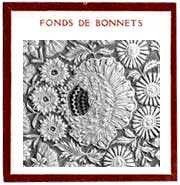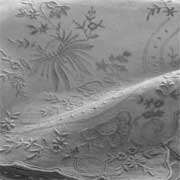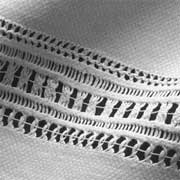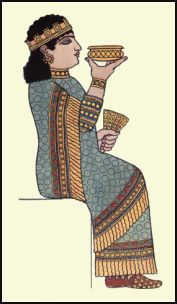Embroidery & Ornamental Weaving.
Methods of ornamental weaving may be broadly classed under three sections :
1-Figured loom-weaving
was brought to so high a perfection by Jacquard's invention of his apparatus at the begining of this century;
2-Tapestry-weaving
in high and low warp frames, in the manners to be seen respectively at the Gobelins and Beauvais factories.
3-Embroidery.
The third method of ornamenting a textile is ornamental needle work, or embroidery. Embroidery sometimes allies itself with the two first named processes in accentuating, by means either of stitches wrought over, or by skilfully outlining certain portions of the pattern in a printed or woven textile to which it is desired to give prominence. But embroidery is more frequently used by itself for decoration and since the practice of this handicraft is freer and more independent than that of printing or weaving, it is capable of more easily producing really artistic effects. (From "Embroidery and Lace " by Ernest Lefebure)
 |
Women's bonnet Mid-19th century silk embroidered circle in linen batiste intended for a "fond de bonnet," the rear portion of an young woman's bonnet. These "fonds de bonnet" were typically a vehicle for master embroideresses to compete in showing off their talents and often, as with this example, both the materials and the craftsmanship were extremely refined and exceptional in their finesse and miniscule detail. |

|
White Embroidery Spectacular White Embroidery: in 19th and early 20th century linens |


